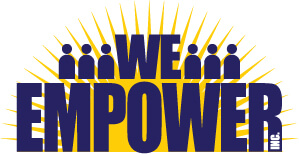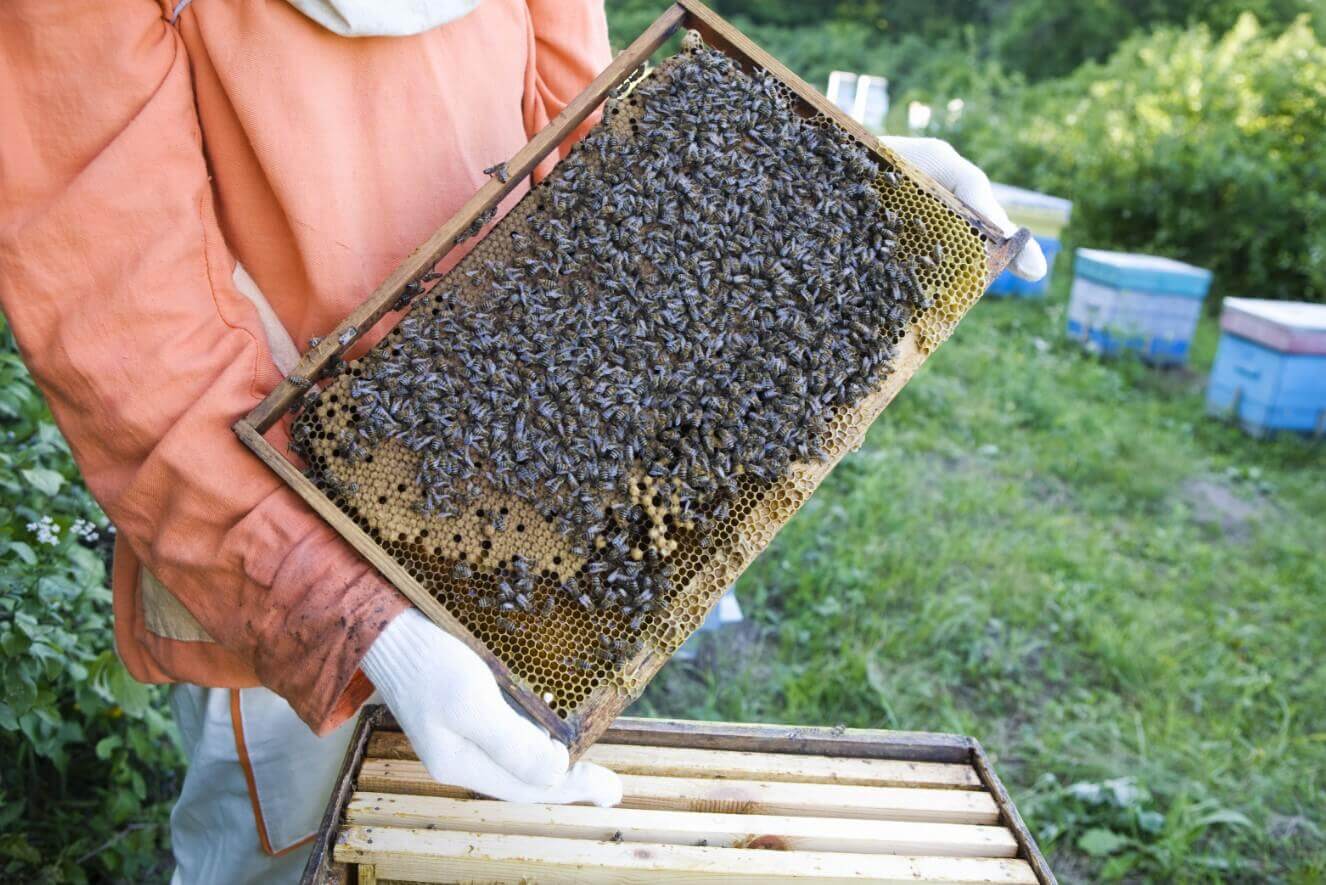
According to an FAO report, “Bees and other pollinators are declining in abundance in many parts of the world largely due to intensive farming practices, mono-cropping, excessive use of agricultural chemicals and higher temperatures associated with climate change, affecting not only crop yields but also nutrition.” Protecting and increasing honeybee populations is a vital component of improving local food security.
As growing seasons change, bees must be present to pollinate crops whenever they are needed. Beekeeping not only increases food production but it can be an excellent income generation tool for women, youth and people with disabilities in both rural and urban settings. Beehives generate many products for sale including honey, pollen, wax, royal jelly, bees, and queens.
We-Empower’s ONE Health approach tackles the concept of food security by integrating the Environmental, Human and Pollinator aspects.
Our experts at We-Empower work closely with key actors of the value chain to to develop a beekeeping program tailored to specific needs and resources.
Useful information and tips: In planning and implementing a honeybee project, one of the first decisions that must be made is how to house your bees.
There are 3 main types of beehives:
- Moveable frame hives, like the Langstroth
- Moveable comb hives, top bar hives (to be discussed next)
- Fixed comb hives, made of clay, bark, logs, woven, etc.
Here in the USA, most beekeepers use Langstroth hives. These are rectangular boxes with 8 or 10 frames inside. Each frame holds wax comb that the bees either fill with honey, brood or pollen. The beekeeper can add more boxes when the colony needs more room during the spring and summer or remove boxes when the population is dwindling. The Langstroth hive is the predominant type of hive used by the over 200,000 beekeepers in America.
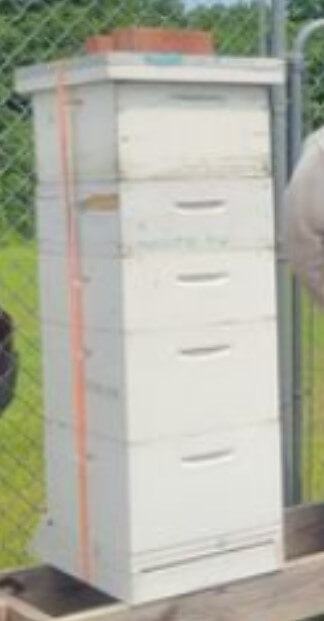
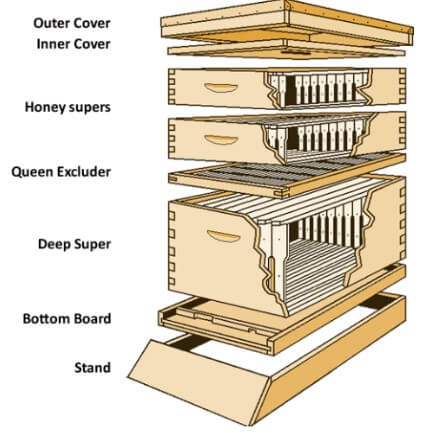
The Langstroth hive (and other similar styles) makes it very easy to inspect the bee colony. Inspections allow the beekeeper to see if there is a good laying queen in the hive, if the colony is getting ready to swarm, if pests are present or if there are signs of disease.
The Pros of Langstroth hives
- Inspections are easy
- It is easy to make more hives from a crowded hive to prevent swarming’
- It is easy to feed the colony when there is no natural food available
- It is possible to keep the queen out of the honey boxes
- Once honey is extracted the comb can be returned to the hive to be used again
- These hives have a high yield of honey
The design of the Langstroth hive is convenient but has its drawbacks:
- The entire colony is disturbed during inspections
- The all the wooden ware can be very expensive
- A high level of skill is needed to build boxes and frames
- The boxes of honey can weigh 60-80 pounds
- Honey frames are harvested using centrifugal force. This equipment is also expensive
- You need extra frames to replace frames removed for honey extraction
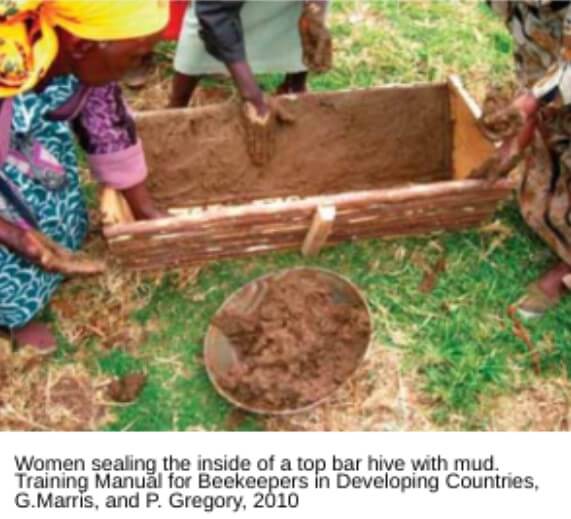
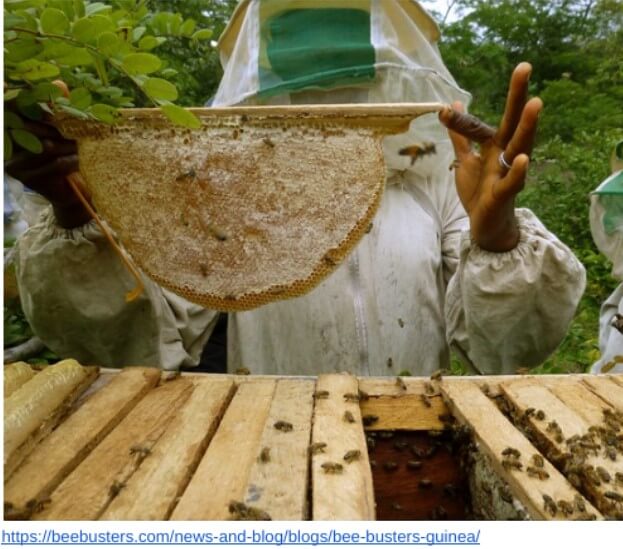
Top bar hives have likely been in use for thousands of years. The designs most often used now were developed in the 1960’s. These hives are not commonly seen in the USA. though there is increasing interest in them among beekeepers.
The Pros of Top bar hives
- They are easy to make from many local materials.
- Inspections are easy and not very disturbing for the bees
- No heavy lifting
- The top bars require little skill to make
- Extra equipment is not needed
- Honey harvesting is easy
- The boxes can be hung from trees to avoid pests like scorpions and toads
The cons of a Top bar hive
- They produce less honey than the Langstroth hive
- Because the comb is only attached at the top it can easily break off
- Bees use a lot of energy to rebuild the comb after honey harvesting
- Honey requires a lot of straining to remove wax after extraction
The last type of hive is the more traditional hives. These hives are inexpensive and easy to make. Hollow logs, clay pots, gourds or woven baskets are just some of the ways to make traditional hives. Bees have been kept in hives like these for thousands of years. However, the cons greatly outweigh the pros with regards to traditional hives.
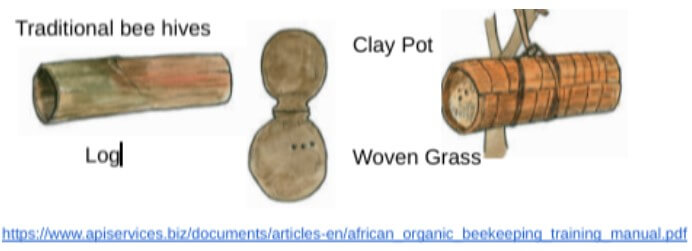
The pros of Traditional hives.
- Inexpensive and easy to make
- The knowledge base is large and time tested
- The hives have been adapted to local conditions
The cons of traditional hives
- They produce the least amount of honey
- It is not possible to do inspections
- It is easy to damage or destroy brood and food resources when harvesting honey
- Honey requires a lot of straining to remove wax after extraction
- Bees use a lot of energy to rebuild comb after honey harvest
There are many organizations promoting and training beekeeping in developing countries these days. Keeping bees can be an excellent way to improve both the environment and the livelihoods of people in rural areas from the tropics to the deserts. Honey isn’t the only product that can be produced by the bees. Wax, pollen and propolis have uses in traditional medicines and other health and beauty products as well as household products. I just hope that beekeeping projects consider the most appropriate hive for the people involved.
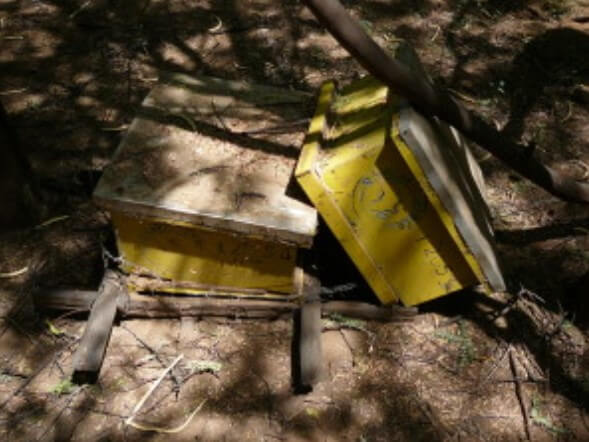
http://africanbeekeeping.org/
https://resources.beesfordevelopment.org/
https://teca.apps.fao.org/teca/fr/technologies/7273
https://www.fao.org/3/i2462e/i2462e.pdf
https://www.apiservices.biz/documents/articles-en/african_organic_beekeeping_training_manual.pdf
https://www.apiservices.biz/
https://honeybeehealthcoalition.org/
